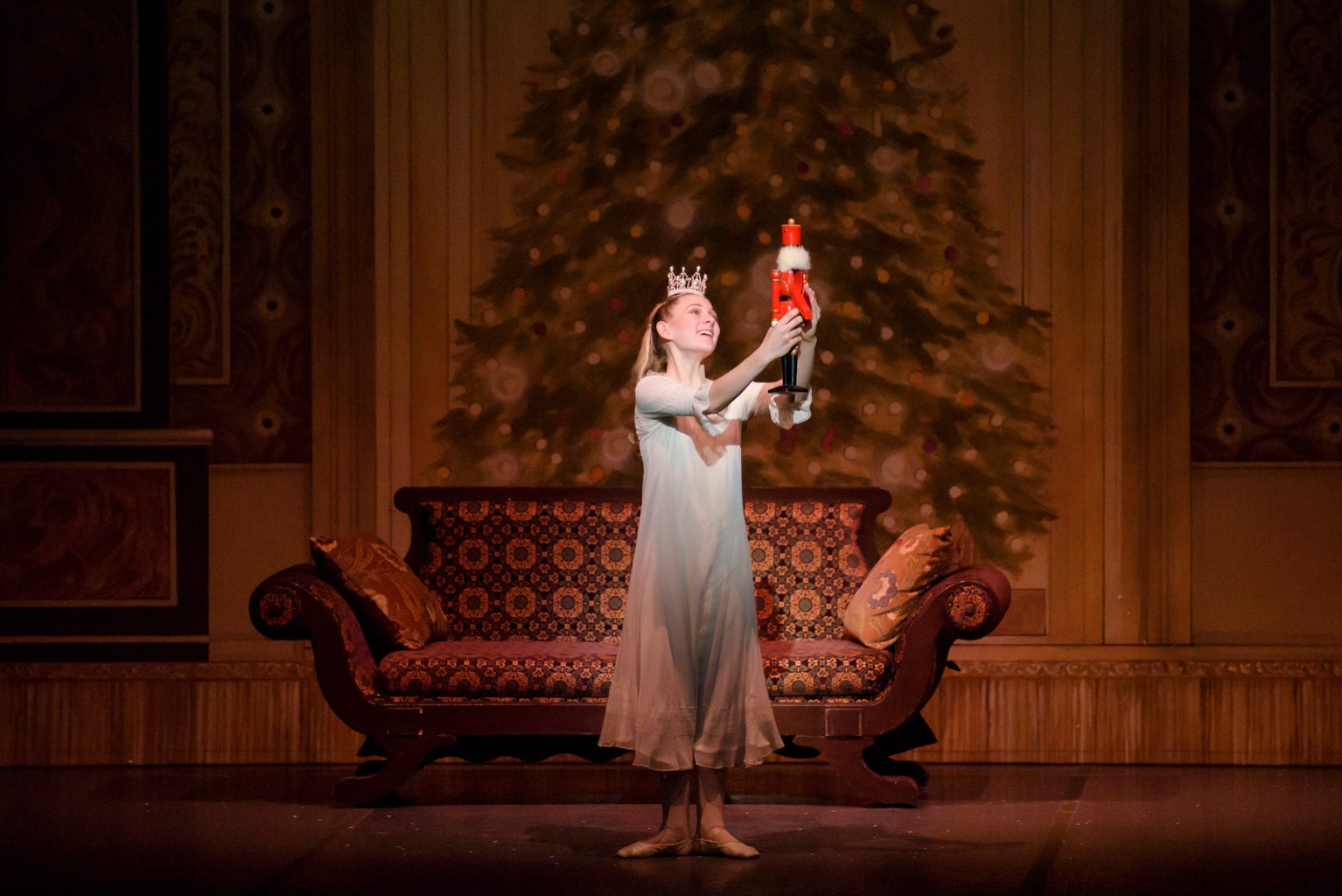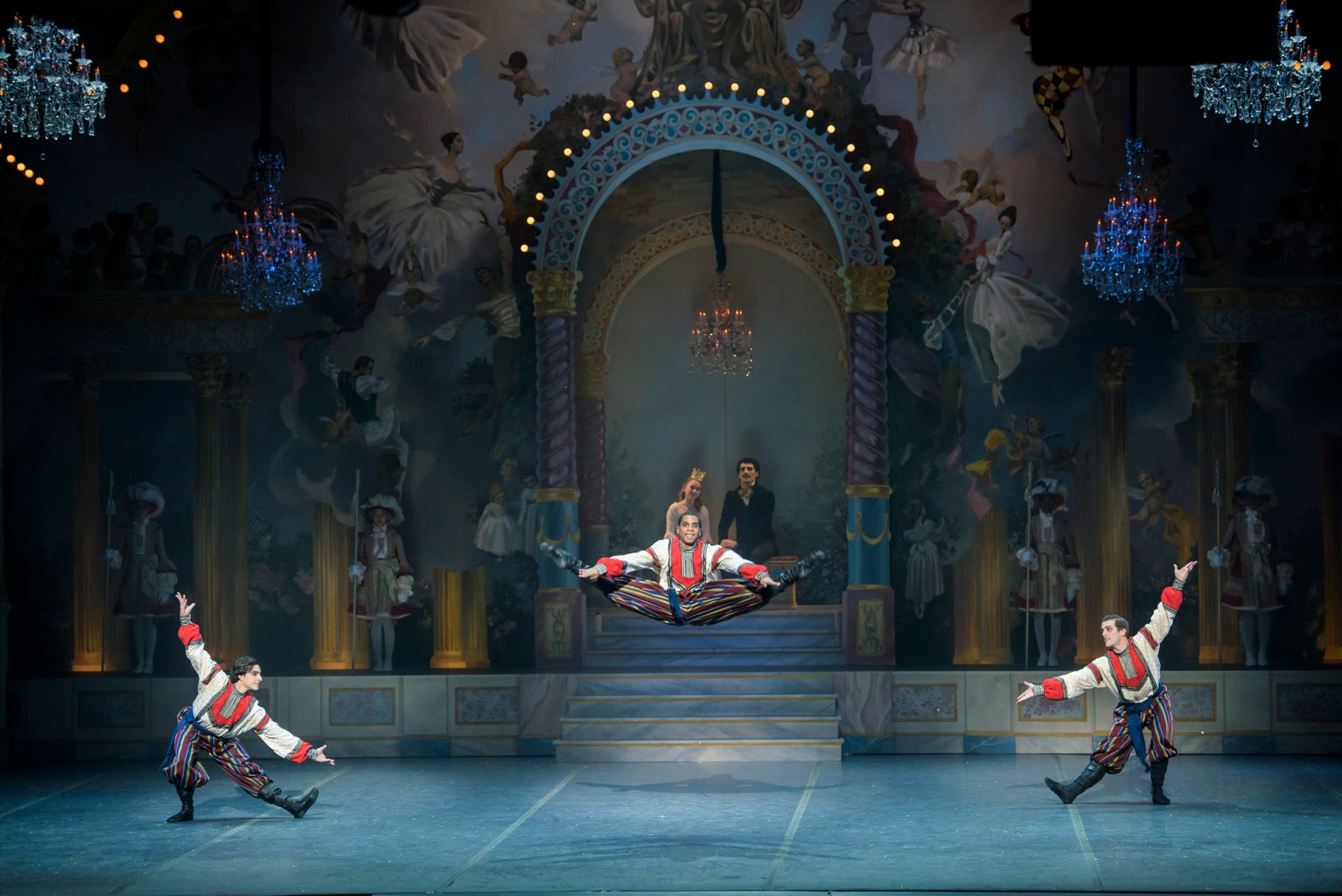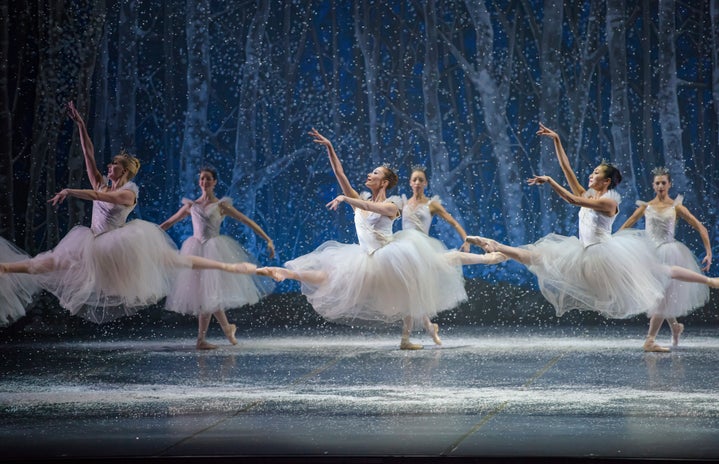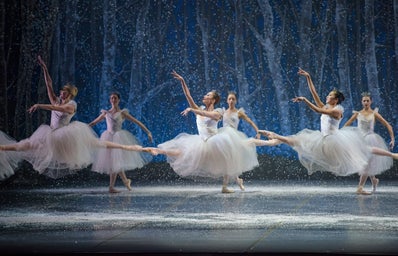This is a sponsored feature. All opinions are 100% from Her Campus.
Going to see “The Nutcracker” is a holiday tradition that brings the joy and magic of Christmas to life. Boston Ballet’s most recent production of Tchaikovsky’s holiday masterpiece certainly took every opportunity to raise people’s spirits, and for the most part, they succeeded. Yet the show overall still lacked a certain vitality, particularly in the second half, that left audiences feeling more ready for a nap than an adventure in a winter wonderland.
Set on Christmas Eve, the ballet opens onto a town square where the mysterious toymaker, Herr Drosselmeier, presents a performance to all the children. The scene then changes to the Silberhaus’ Christmas party, where Clara Silberhaus and her brother Fritz, along with the other children, entertain themselves while waiting to receive their Christmas gifts. All of the children, played by students of the Boston Ballet School, were fun to watch as they acted out their steps with care.
The party is interrupted when Herr Drosselmeier arrives, appearing an hour late but making up for his delay by entertaining the children with magic, a toy theatre, a mechanical ballerina, a harlequin and a life-size bear, who became the star of the show while on-stage. After all of these performances, Herr Drosselmeier presents his favorite creation: the Nutcracker. Only Clara finds the Nutcracker interesting, and she begs Herr Drosselmeier to make it life-size. The party begins to wind down, and Clara falls asleep on the sofa with the Nutcracker in her arms.

The second act opens with Clara and the Nutcracker Prince arriving at the Nutcracker Prince’s Kingdom, where the Sugar Plum Fairy reigns. Clara is presented with a crown, and then a series of dances showcasing national pride are performed in Clara’s honor, beginning with the Spanish dancers. They are followed by a sultry Arabian duo, a Chinese dance, a French Pastorale, the infamous, larger than life Mother Ginger and finally the spectacular, Russian Trepak.
While most of the national dances were full of pride, the inclusion of the infamous Chinese dance seemed glaringly obtuse, particularly as the dancers chosen were white. Dressed in stereotypical Chinese clothing, including the Asian rice hat, and following the stereotypical actions of Chinese characters from 1940s movies such as servile kowtowing, their scenes were more disturbing than charming. While the Boston Ballet at least did not engage in Yellow Face, the choreography was still disappointing.

Though there were bursts of creativity in the choreography, the true magic of the show came through the magnificent sets. The iconic Christmas tree featured in the first act grows to be 42 feet 6 inches tall and features 600 ornaments that make you feel as if you are really in Clara’s dream. Everywhere you look, no matter the scene, the set painting holds surprises, such as the many dancers featured on the background of the Nutcracker Prince’s Kingdom. The brilliance of the set design makes the show worth seeing in and of itself.
Boston Ballet’s production of “The Nutcracker” was not a magical experience that whisked you away from real life and immersed you into a winter wonderland, but the performance did have some enjoyable highlights. The staging was impeccable and the use of real children from the Boston Ballet School in the party scene proved to be a wonderful choice that added to the realistic feeling of the first act. For those looking to relive their childhood through a traditional performance of “The Nutcracker,” Boston Ballet’s production will suit, but do not expect to be blown away by innovative choreography.
____________________________________________________________________________
Presented by Boston Ballet. At the Boston Opera House, through Dec. 30.
617-695-6955, www.bostonballet.org


